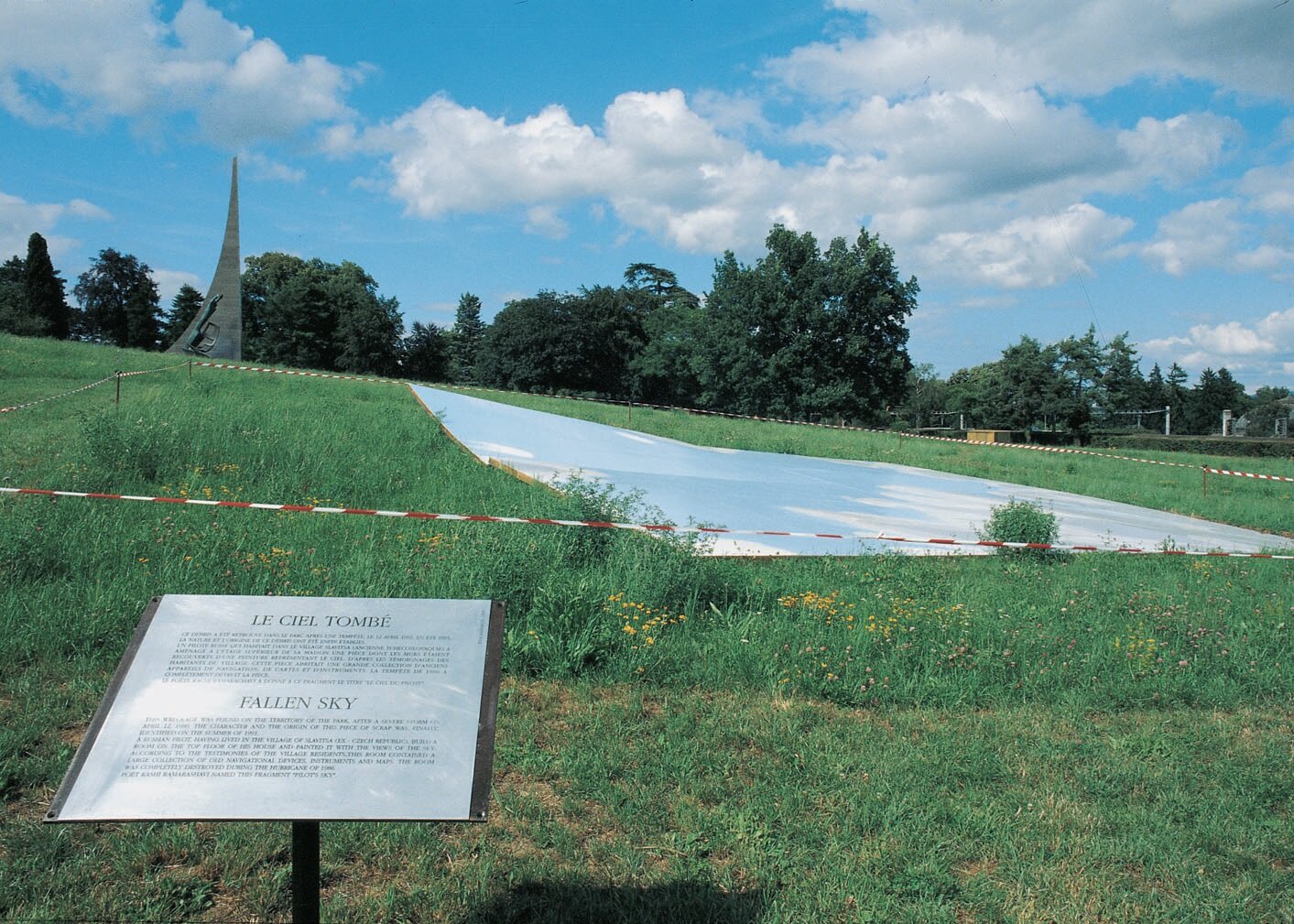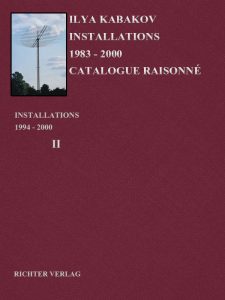Fallen Sky
YEAR: 1995
CATALOG NUMBER: 88
PROVENANCE
1995, Collection Uno, Geneva
EXHIBITIONS
Geneva
Dialogues de Paix, 3 Jul 1995 — 4 Oct 1995
Japan, Tenshin Memorial Museum Of Art, Ibaraki
Kenpoku Art 2016, 17 Sep 2016 — 20 Nov 2016
DESCRIPTION
A half-broken large board, 11 x 11 meters in size, is lying right on the grass at the far end of the park on a large open lawn with an open view of the lake. It is half-broken in the middle, as though from hitting the ground. The impression is created that the board glided in from somewhere up above: one part of it is lying on the grass, the other edge has entered the ground not very deeply. A blue sky with clouds is depicted on the entire surface of the board, just as it would be if we were looking up at the sky, at its zenith. A police barrier consisting of a ribbon on metal posts surrounds the fallen board, just like around any place of a catastrophe. In one place near the barrier, there is a slanted explanation board about what happened here and where this ‘fallen sky’ came from.
ARTIST’S COMMENTS
The entire ‘trick’ of this installation – as is the case with many ‘installations of place’ – is the location, the context the installation acquires from the space surrounding it and what it ‘works with’ that is naturally there already.
The installation is erected in the park of the United Nations in Geneva in a large open glade. To the left (if you look from the explanation board) on the mountain you can see the monumental building of the United Nations. If you look from the mountain downward, then the installation looks like something large is just lying on the green grass.
But the most interesting is the following situation. If, once again, you look at the installation from the position of the explanation board, then on this very ‘axis of vision’ at a short distance you can see the monument to the astronauts given by the Soviet government to the United Nations in its own time. This magnificent structure of cement, representing a sloping spire taking off upward, depicts the path of man to the stars. The monument is easily read against the backdrop of the large trees of the park, and unwittingly in the mind of the viewer it is connected to, corresponds to, the installation Fallen Sky as a work brought here and installed by the authors from one country. Yet it relates to various periods in the life of that country. A monument to astronauts in the middle of the 1960’s represents the image of the superiority of the Soviet state in conquering space, a symbol of the victory of Soviet power and movement upward, vertically, to new victories of this power and this country.
The Fallen Sky is laid out horizontally, and represents a disintegrating sky, that same sky into which thirty years ago this country was striving with such confidence and solemnity. 1995 was the year of the virtual collapse economically of this empire that at some point was so powerful, and the collapse of the empire itself, a time of the onset of chaos and impoverishment for an enormous segment of the population.
There is yet another ‘aspect’ of this installation Fallen Sky. The monument to Space, although it was done by an author-sculptor, exists in the form of a gift from one country to all the other countries. That is, it stands as a political representation. The Fallen Sky does not represent anyone. Rather, it stands as a commentary of a private individual on ‘state’ art. Hence, being situated on one axis, shifting from the foreground to the background, both these monuments ‘work’ as commentaries to one another. Of course, that is for the viewer who knows the meaning and ideas of each of these participants in the duet.
There is one more level of reflection related to this ‘installation.’ I have in mind here its intentionally provocative nature: the Park of the United Nations is the highest kind of official organization filled with such weighty monuments forged out of metal, bronze, etc. The broken piece of plywood lying on the ground and depicting the Fallen Sky will clearly create the impression that this is something accidental here, that it shouldn’t be here, that it really was carried here by the wind (as explained in the text on the explanation board). For the ‘normal’ viewer for whom this work is intended who doesn’t know or like ‘modernism,’ all of this appears strange and, of course, provocative in such a place.
Images
Literature



